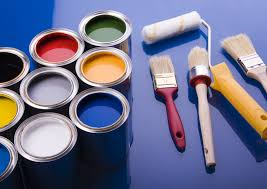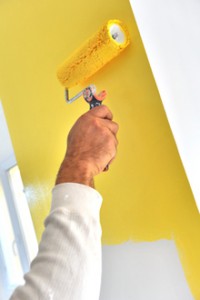To paint… or not to paint? That’s a really good question. Here’s an article I came across by Angie Hicks, founder of AngiesList, that could help answer the “painting question” for you…
Living Smart: Interior Painting—Picking Color and Finish
(MCT)—In the spring, many a homeowner’s fancy turns to thoughts of fresh paint, because what else renews a room as quickly? That doesn’t mean interior painting is a breeze. There are defined steps to a quality job, and they start with picking the right color and paint finish.
 To avoid becoming overwhelmed by the thousands of color options, follow advice that highly rated decorators and painters gave our team and start by considering the mood you want to create. For example, bold, bright colors work well in high-activity rooms, such as a kitchen, while softer colors are best for rooms where you relax, such as a bedroom.
To avoid becoming overwhelmed by the thousands of color options, follow advice that highly rated decorators and painters gave our team and start by considering the mood you want to create. For example, bold, bright colors work well in high-activity rooms, such as a kitchen, while softer colors are best for rooms where you relax, such as a bedroom.
For a cozy mood, such as for a family room, choose deep colors. For an airy, open mood, select lighter colors. In a dining room, achieve a formal mood with warm neutrals, deep tones and dark shades. For a spirited feel in a playroom, combine bright, high-energy colors.
The next step is to match the paint finish to the room’s purpose. Here are expert guidelines:
Flat: Often used by painting pros because it doesn’t reflect light and hides imperfections well. However, it doesn’t wash easily; cleaning reduces paint saturation.
Eggshell: Features an understated shine and is somewhat easier to clean than flat, while hiding imperfections less well.
Satin: Has a medium gloss and smooth finish that can work well in bathrooms and kitchens. Won’t hide imperfections but is washable and withstands humidity.
Semi-gloss and high-gloss: Good for kitchens, bathrooms, high-traffic areas, baseboards and other trim because they can handle high humidity and frequent washing. Won’t hide wall imperfections.
To get an idea of what painting will cost, consider that an average bedroom will require two or three gallons of paint, which can cost $30 or more each. A full set of materials — including paint, brushes and wall-prep materials — can cost around $200.
If you’d rather hire a pro to more quickly, and probably more expertly, transform a room, plan to pay around $100 to $300 an hour for labor, in addition to suppliesTo hire well:
 —Look for painters who’ve been in business five or more years, who have good online reputations or recommendations from people you know, who offer a warranty on labor and materials and are insured.
—Look for painters who’ve been in business five or more years, who have good online reputations or recommendations from people you know, who offer a warranty on labor and materials and are insured.
—Ask if the company uses subcontractors, as that could mean work done by inexperienced or uninsured laborers.
—Review photos of past jobs, and ask for and check references. Confirm whether the crew cleaned up properly.
—Include important details in the contract, such as how much wall preparation is included, how many coats will be applied, what brand of paint will be used, how much extra wall repairs and coats of paint will cost and when the job will be done.
—Be aware of tactics used by disreputable painters, which include using cheap paint while charging for such premium brands, watering down paint, using old paint and low-balling estimates in order to charge more later.
* This article written by Angie Hicks, © 2014 – http://www.angieslist . com/, has been shared here in it’s original form without alteration as a courtesy to my past, current & prospective real estate clients.



